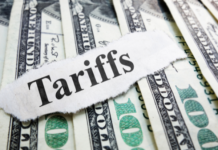This column was originally published in Sign Builder Illustrated‘s August 2024 edition.
Winning a variance takes time and money. While it can be a gamble, the payoff can be great.
Last year, ISA launched a service to help. Recently, one gas station landed a new—and bigger—sign thanks to ISA’s work. The proposed sign did not meet the city’s criteria for freeway signs since it wasn’t directly adjacent. The city’s sign code would allow a sign that was 18 feet tall and 130 square feet in surface.
ISA and the sign company were able to successfully argue for a 50-foot-tall sign that’s 160 square feet in surface. Those increases made the sign far more visible to travelers along the nearby freeway.
As ISA has worked on variances in recent years, we’ve learned a few important lessons:
- Often, a variance is not needed—a correct reading of the sign code is. In many cases, a variance isn’t even needed. The sign code is being misinterpreted by the planners or other local officials. So before hiring a variance service, dig into the codes. ISA can help in this area; it’s a free service for ISA and ISA affiliate members—and one of the most powerful benefits of membership.
- There is tremendous power in information. That gas station sign variance argument was buoyed by a recent publication from the Sign Research Foundation (SRF): On-Premise Signage: Situations, Legibility & Visibility (Guidelines for Traffic Safety). This resource provided calculations to prove the concepts ISA was arguing. Go to www.signresearch.org to find credible backing for your argument.
- Planners appreciate speaking the planning language. The planners across the table appreciated that ISA could speak their language and understood their perspective. James Carpentier, ISA’s director of state and local government affairs, is a certified planner and can find common ground with planners who will decide whether the variance is approved.
- Variances take time—which you probably don’t have. Preparing to argue a variance takes time researching the code, understanding the regulations, and seeking out any other comprehensive design plans. You may have to visit the site in person to explore additional nuances as you make your case. Outsourcing this time-intensive project may be necessary.
- Visuals can help supplement the variance argument. Sign companies must partner with variance experts when seeking a variance. In the winning gas station variance, the sign and graphics company provided images of the proposed sign, which could be shown in context of the site plan and drawings. It helped make a successful variance pursuit.
Ready to pursue a variance? There are a few steps to start with:
- Don’t give up on good ideas, but don’t pursue wild goose chases. Variances take work and not all of them will be successful. ISA’s advocacy team will determine which variances have the best opportunity for success. But ones worth pursuing could result in considerable added revenue.
- Have the best research and analysis. There are plentiful Sign Research Foundation (SRF) studies and reports that can cement arguments to secure a variance. SRF’s resources, found at signresearch.org, on regulation, economics, design and technology can lead to winning arguments.
- Contact ISA. ISA is here to help with sign codes, permitting and variances. Contact [email protected]











